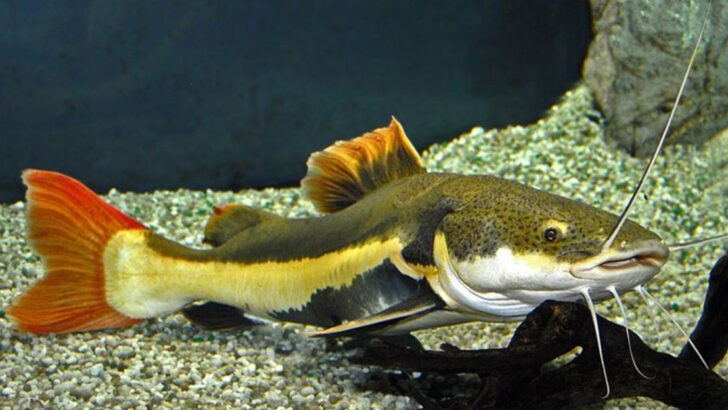They’re beautiful. They’re mesmerizing. And they absolutely do not belong in your living room tank. Some fish are born to roam rivers, not glass boxes. They might look peaceful under soft lighting at the pet store, but bring them home—and you’re suddenly hosting a 3-foot predator, a tankmate killer, or a fish with needs you can’t possibly meet. These aren’t mythical monsters or sharks. They’re flashy, tempting, and very real species that beginner aquarists fall for every day—only to regret it later. Before you turn your aquarium into a nightmare with fins, meet 12 aquatic stunners you’ll want at first sight— and learn exactly why they’re better left in the wild or expert care.
Arowana
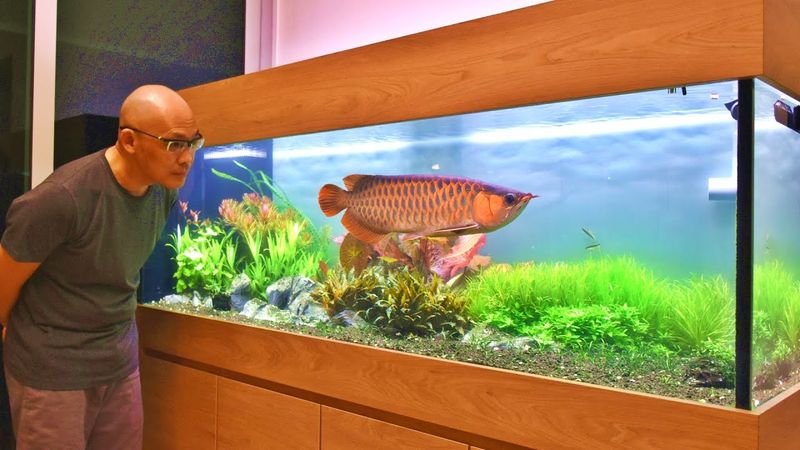
The Arowana is often celebrated for its majestic appearance and is deeply revered in various cultures as a symbol of luck. Its metallic scales glisten under the light, making it a captivating sight. However, this fish can grow over three feet long and has a notorious reputation for jumping out of tanks.
Arowanas require vast spaces to swim freely, which most home aquariums can’t provide. Their dietary needs are also quite demanding, as they prefer live food. Housing an Arowana in a confined space can lead to stress and health issues, making them unsuitable for typical tanks.
Oscar Fish
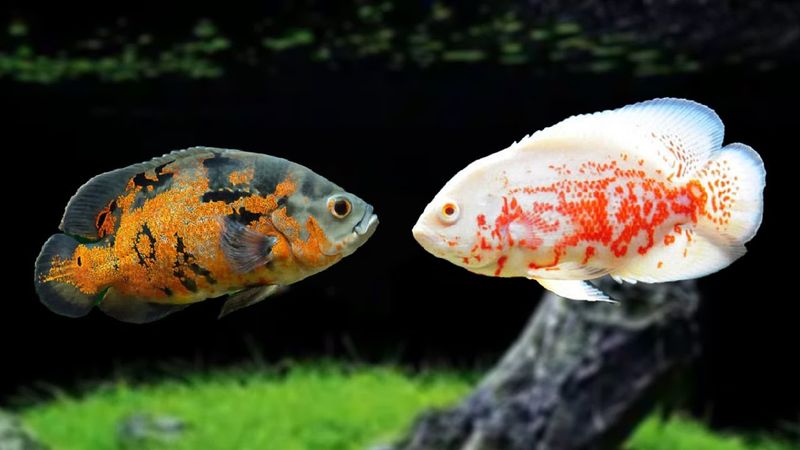
Oscar Fish are known for their striking patterns and vibrant personalities, making them a favorite among fish enthusiasts. However, these beauties come with a fierce temperament. They often exhibit aggressive behavior towards tankmates, sometimes even resorting to violence.
Their territorial nature demands a spacious environment to thrive, which can be challenging to replicate at home. Additionally, Oscar Fish require a robust filtration system to maintain water quality. Their dietary preferences also lean towards live and varied food, adding another layer of complexity for potential keepers.
Pacu
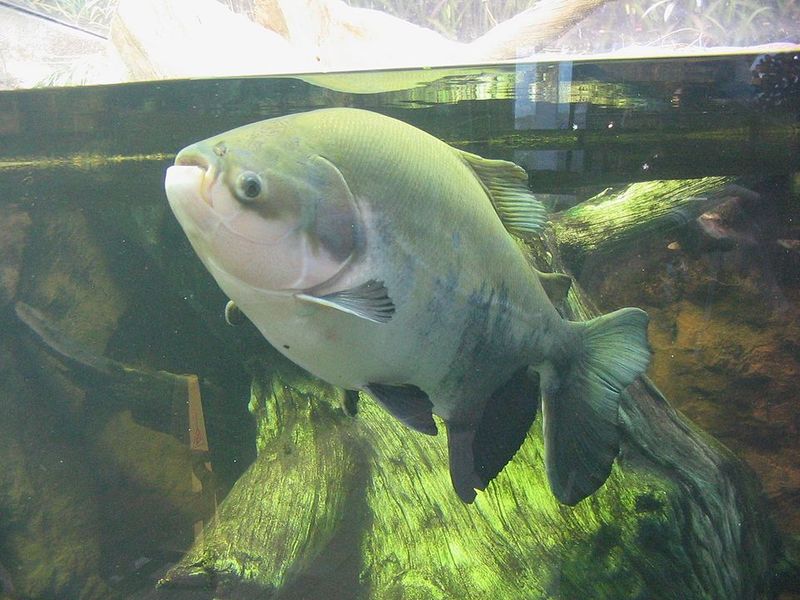
The Pacu is often mistaken for a piranha due to its appearance, but a closer look reveals its human-like teeth. This feature, combined with its massive appetite, makes it a unique but challenging fish to keep. Pacus can grow over two feet long and have the potential to outgrow most tanks.
They are known for their voracious eating habits, which can strain food budgets and filtration systems. Pacus prefer a spacious environment that mimics their natural habitat, making them ill-suited for typical aquariums. These factors make them more trouble than they’re worth for most fish keepers.
Freshwater Stingray

Freshwater Stingrays captivate with their grace and rarity, making them a coveted choice for enthusiasts. However, their care requirements are stringent. They need expansive tanks with pristine water conditions to mimic their natural habitats.
Handling these creatures demands caution, as they possess venomous barbs capable of inflicting painful stings. Their diet consists mainly of live food, requiring careful preparation. The combination of these needs makes them a challenging and unsuitable choice for most home aquariums. Their unique beauty is best appreciated in environments designed specifically for their care.
Redtail Catfish
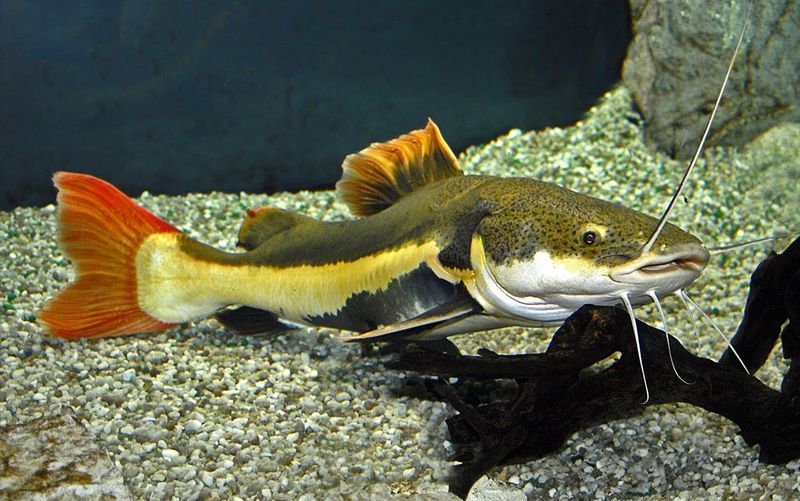
Redtail Catfish are often adored for their distinct red tails and endearing appearances as juveniles. However, they quickly outgrow their charm, developing into massive, four-foot-long predators. Their rapid growth and dietary needs make them challenging to maintain in home aquariums.
These fish require a vast, well-filtered environment to accommodate their size and predatory nature. The average tank size in most homes cannot provide the necessary space for their well-being. Although intriguing, Redtail Catfish are best admired in facilities capable of offering the care and space they deserve.
Wolf Cichlid (Parachromis dovii)
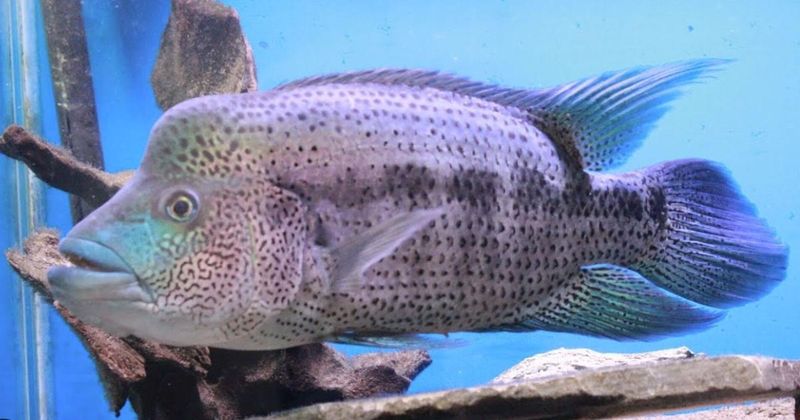
The Wolf Cichlid, with its metallic sheen and powerful jaws, is a sight to behold. Known for its aggressive dominance, this fish doesn’t just fight—it dominates. Keeping them requires an understanding of their territorial instincts.
Wolf Cichlids need environments that provide both space and stimulation, as their intelligent nature can lead to destructive behavior if bored. They thrive in isolated settings, as tankmates often fall victim to their aggression. For those unable to meet these needs, the Wolf Cichlid remains a formidable fish best observed rather than kept.
Clown Knifefish
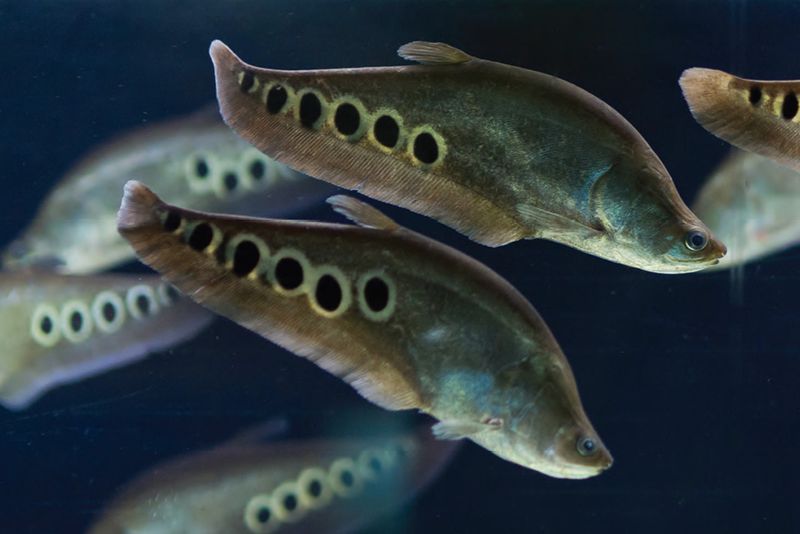
Clown Knifefish captivate with their sleek, spotted bodies, moving through water with a hypnotic grace. But their beauty comes with challenges. They can exceed three feet in length, demanding large tanks with ample space.
These nocturnal hunters thrive in dimly lit environments, preferring to hunt under the cover of darkness. Their dietary needs involve live prey, adding complexity to their care. Although alluring, Clown Knifefish are best left in habitats designed to meet their elaborate needs, as typical home aquariums fall short of their requirements.
Green Terror Cichlid
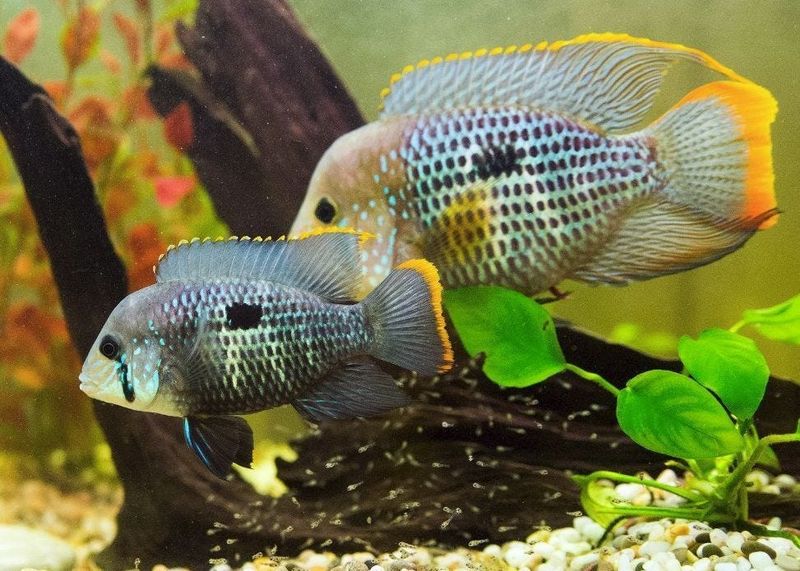
The Green Terror Cichlid, with its vibrant electric green hues, can be hard to resist. Its beauty, however, belies a quick temper. This fish is notorious for its aggressive tendencies, often turning on tankmates without warning.
Housing them requires careful consideration, as their territorial nature demands ample space and hiding spots to prevent conflict. Properly maintained tanks with robust filtration are essential, as Green Terrors produce significant waste. Owning a Green Terror Cichlid is a commitment that requires accommodating their spirited and tenacious nature.
Peacock Bass
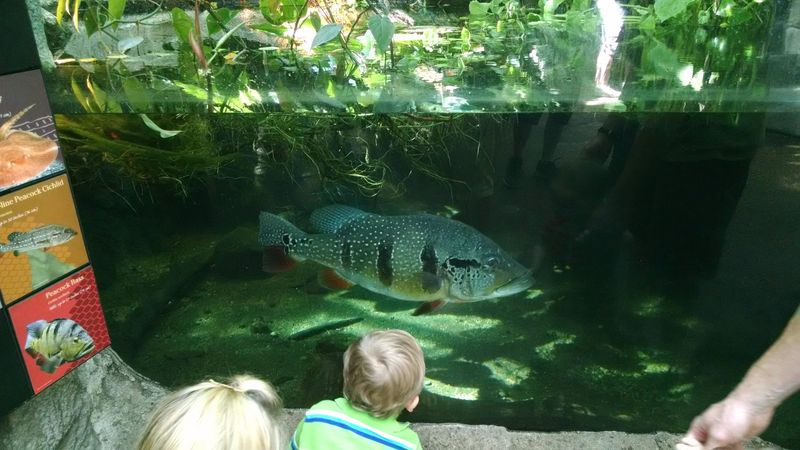
Peacock Bass are admired for their striking colors and swift movements. However, these beauties grow to impressive sizes, requiring large tanks to accommodate their active lifestyle. Their dietary needs are also demanding, as they thrive on live food to maintain health.
Attempting to house a Peacock Bass in a standard aquarium can lead to challenges, both in space and maintenance. Their presence is best suited to environments that can replicate their natural habitats, ensuring their well-being and allowing their full splendor to be appreciated safely.
Giant Gourami
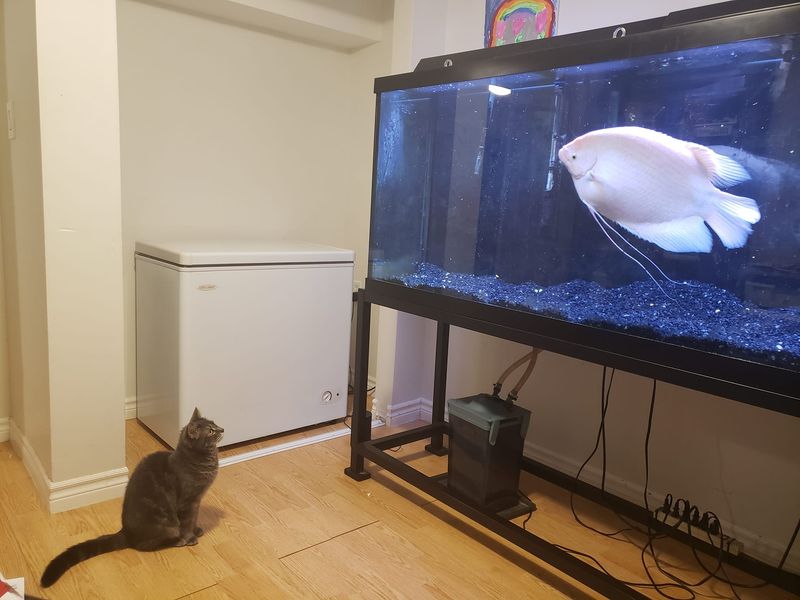
Giant Gouramis start as gentle juveniles, captivating with their curious nature. However, as they grow, they become bulky and develop demanding temperaments. Some can reach over two feet, requiring substantial space and careful attention.
Their dietary needs are varied, often necessitating fresh and diverse foods to ensure health. The tank environment must be robust, with strong filtration to handle their waste output. For those unable to provide such conditions, Giant Gouramis are best left to aquariums designed for their intricate needs, ensuring both their health and happiness.
Mbu Pufferfish
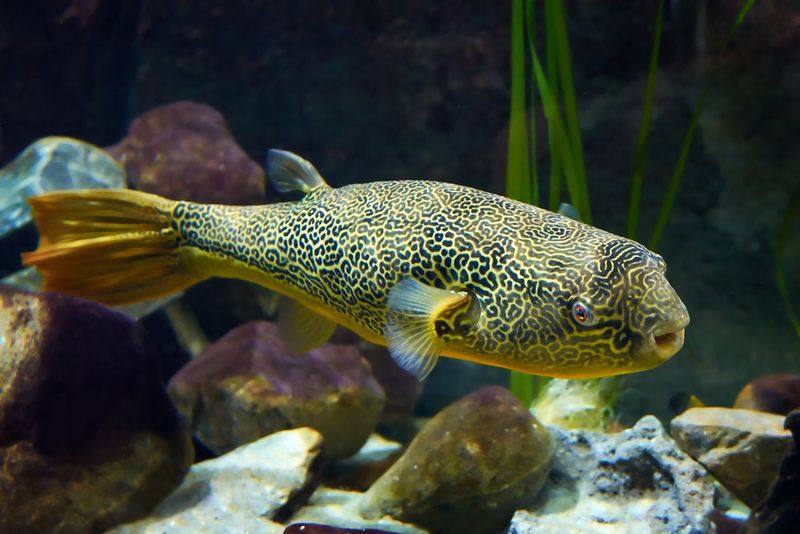
The Mbu Pufferfish, with its adorable face and distinctive features, is a charming addition to any aquarium. However, this charm is coupled with a deadly bite. Their beaks continuously grow, requiring a meat-heavy diet to prevent overgrowth.
These fish need vast spaces to accommodate their size and active nature. Their care demands are high, with water quality and dietary needs being critically important. While their allure is undeniable, Mbu Pufferfish are best suited to specialized setups where their unique requirements can be thoroughly met and maintained.
Black Ghost Knifefish
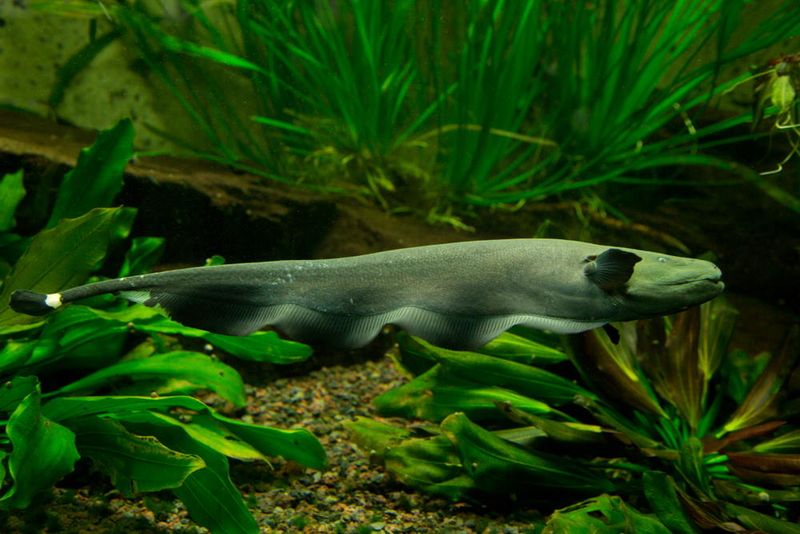
The Black Ghost Knifefish exudes mystery and elegance with its smooth, dark body gliding effortlessly through the water. These fish require dim lighting and ample space to thrive, as cramped conditions can lead to stress.
Their unique swimming style and nocturnal habits add to their allure, but also require specific tank conditions. Proper care involves maintaining a large, well-filtered tank that mimics their natural environment. For aquarists unprepared to meet these needs, the Black Ghost Knifefish remains an enigma best appreciated in more suitable settings.

